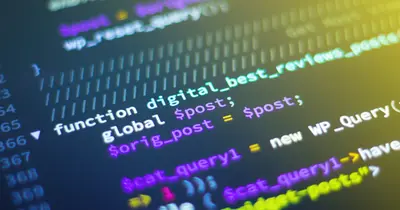📦 AlmaLinux Package Management: Complete DNF & YUM Guide
Welcome to the wonderful world of package management on AlmaLinux! 🎉 Think of package management as your personal software store where you can install, update, and remove programs with just a few simple commands. Whether you want to install a web server, development tools, or games, the package manager makes it incredibly easy! 🛍️
Package management might seem intimidating at first, but it’s actually one of the most user-friendly aspects of Linux! 💪 From installing your first package to managing complex dependencies and repositories, we’ll learn everything step by step. Get ready to become a software installation wizard and make your AlmaLinux system do exactly what you want! ✨
🤔 Why is Package Management Important?
Package management is the heart of Linux system administration! Here’s why you should master it:
- 🎯 Easy Installation: Install software with a single command
- 🔄 Automatic Updates: Keep your system secure with automatic updates
- 🛡️ Dependency Resolution: Automatically handle software dependencies
- 🧹 Clean Removal: Remove software completely without leftover files
- 📊 Security Updates: Get critical security patches quickly
- 🌟 Software Discovery: Find new software easily through repositories
- ⚡ Efficient Management: Handle thousands of packages effortlessly
- 🔍 Package Information: Get detailed information about any software
🎯 What You Need
Before we start managing packages, make sure you have:
✅ AlmaLinux 8 or 9 installed and running ✅ Root or sudo access for installing and removing packages ✅ Internet connection for downloading packages ✅ Basic terminal knowledge (cd, ls, cat commands) ✅ Understanding of user permissions (sudo usage) ✅ Some idea of software you want to install (optional but helpful) ✅ Patience for larger downloads and installations
📝 Understanding DNF Package Manager
Let’s start by understanding AlmaLinux’s package manager! 🎓
DNF vs YUM
# Check DNF version
dnf --version
# Output: Shows DNF version and Python version
# Check if YUM is available (it's a symlink to DNF)
which yum
# Output: /usr/bin/yum (points to DNF)
# Both commands work the same way
dnf list installed | head -5
yum list installed | head -5
# Output: Both show the same installed packages
# Check package manager configuration
cat /etc/dnf/dnf.conf
# Output: Shows DNF configuration settingsBasic Package Information
# Search for a package
dnf search nginx
# Output: Shows packages matching "nginx"
# Get detailed package information
dnf info nginx
# Output: Shows description, version, size, etc.
# List all available packages
dnf list available | head -10
# Output: Shows first 10 available packages
# List installed packages
dnf list installed | head -10
# Output: Shows first 10 installed packages🔧 Installing Packages
Basic Package Installation
# Install a single package
sudo dnf install nginx
# Output: Shows package details and asks for confirmation
# Install multiple packages at once
sudo dnf install git vim wget curl
# Output: Installs all specified packages
# Install package without confirmation prompt
sudo dnf install -y htop
# Output: Installs directly without asking
# Install package from specific repository
sudo dnf install epel-release
# Output: Installs EPEL repository packageInstalling Package Groups
# List available package groups
dnf group list
# Output: Shows available package groups
# Get information about a group
dnf group info "Development Tools"
# Output: Shows packages in the Development Tools group
# Install a package group
sudo dnf group install "Development Tools"
# Output: Installs all development tools
# Install minimal group (only required packages)
sudo dnf group install --setopt=group_package_types=mandatory "Web Server"
# Output: Installs only essential web server packages🌟 Managing Repositories
Understanding Repositories
# List enabled repositories
dnf repolist enabled
# Output: Shows all enabled package repositories
# List all repositories (enabled and disabled)
dnf repolist all
# Output: Shows all configured repositories
# Get repository information
dnf repoinfo base
# Output: Shows details about the base repository
# Search for packages in specific repository
dnf --enablerepo=epel search nodejs
# Output: Searches for nodejs in EPEL repositoryAdding New Repositories
# Add EPEL repository (Extra Packages for Enterprise Linux)
sudo dnf install epel-release -y
# Output: Installs and configures EPEL repository
# Add RPM Fusion repository
sudo dnf install --nogpgcheck https://download1.rpmfusion.org/free/el/rpmfusion-free-release-$(rpm -E %rhel).noarch.rpm
# Output: Installs RPM Fusion free repository
# Add a custom repository
sudo nano /etc/yum.repos.d/custom.repo
# Add this content:
[custom-repo]
name=Custom Repository
baseurl=https://repo.example.com/almalinux/$releasever/$basearch/
enabled=1
gpgcheck=1
gpgkey=https://repo.example.com/RPM-GPG-KEY
# Update repository metadata
sudo dnf makecache
# Output: Downloads repository metadata✅ Updating and Upgrading
System Updates
# Check for available updates
dnf check-update
# Output: Shows packages that can be updated
# Update all packages
sudo dnf update
# Output: Updates all installed packages
# Update specific package
sudo dnf update nginx
# Output: Updates only nginx package
# Update and auto-answer yes
sudo dnf update -y
# Output: Updates without confirmation promptsSecurity Updates
# Install only security updates
sudo dnf update --security
# Output: Installs only security-related updates
# List available security updates
dnf updateinfo list security
# Output: Shows available security updates
# Get information about security updates
dnf updateinfo info
# Output: Shows detailed security update information
# Update system to latest release
sudo dnf system-upgrade download --releasever=9
# Output: Downloads packages for system upgrade🔧 Removing and Cleaning
Package Removal
# Remove a package
sudo dnf remove nginx
# Output: Removes nginx package
# Remove package and its dependencies (if not needed elsewhere)
sudo dnf autoremove
# Output: Removes orphaned packages
# Remove package group
sudo dnf group remove "Development Tools"
# Output: Removes entire package group
# Simulate removal (see what would be removed)
dnf remove --assumeno nginx
# Output: Shows what would be removed without actually doing itSystem Cleanup
# Clean package cache
sudo dnf clean packages
# Output: Removes downloaded package files
# Clean all cache
sudo dnf clean all
# Output: Removes all cached data
# Clean expired repository metadata
sudo dnf clean expire-cache
# Output: Removes old repository information
# List largest installed packages
dnf repoquery --installed --queryformat='%{size} %{name}' | sort -rn | head -10
# Output: Shows 10 largest packages by size🎮 Quick Examples
Example 1: Setting Up Web Development Environment
# Install web development tools
sudo dnf groupinstall "Development Tools" -y
# Output: Installs compilers and development utilities
# Install Node.js and npm
sudo dnf install nodejs npm -y
# Output: Installs Node.js runtime and package manager
# Install Apache web server
sudo dnf install httpd -y
# Output: Installs Apache HTTP server
# Install MySQL/MariaDB
sudo dnf install mariadb-server mariadb -y
# Output: Installs MariaDB database server
# Install PHP
sudo dnf install php php-mysql php-json -y
# Output: Installs PHP and essential modules
# Verify installations
node --version && npm --version
httpd -version
mysql --version
php --version
# Output: Shows version numbers of installed softwareExample 2: Media Server Setup
# Add RPM Fusion repository for media codecs
sudo dnf install epel-release -y
sudo dnf config-manager --enable powertools
sudo dnf install --nogpgcheck https://download1.rpmfusion.org/free/el/rpmfusion-free-release-$(rpm -E %rhel).noarch.rpm
# Install media server software
sudo dnf install plex-media-server -y
# Output: Installs Plex Media Server
# Install media tools
sudo dnf install ffmpeg vlc -y
# Output: Installs video processing tools
# Install file sharing tools
sudo dnf install samba samba-client -y
# Output: Installs Samba for Windows file sharing
# Check what was installed
dnf list installed | grep -E "(plex|ffmpeg|vlc|samba)"
# Output: Shows installed media-related packagesExample 3: Security and Monitoring Tools
# Install security scanning tools
sudo dnf install nmap wireshark-cli tcpdump -y
# Output: Installs network security tools
# Install system monitoring tools
sudo dnf install htop iotop nethogs -y
# Output: Installs system monitoring utilities
# Install firewall management
sudo dnf install firewalld -y
# Output: Installs advanced firewall
# Install intrusion detection
sudo dnf install fail2ban -y
# Output: Installs intrusion prevention system
# Install log analysis tools
sudo dnf install logwatch logrotate -y
# Output: Installs log management tools
# Verify security tools
nmap --version
htop --version
firewall-cmd --version
# Output: Shows versions of security tools🚨 Fix Common Problems
Problem 1: Package Installation Fails
Symptoms: Error messages during package installation
Solution:
# Update repository metadata
sudo dnf makecache
# Output: Refreshes repository information
# Check for conflicting packages
dnf list conflicts
# Output: Shows conflicting packages if any
# Clean DNF cache and try again
sudo dnf clean all
sudo dnf makecache
sudo dnf install package-name
# Output: Fresh cache should resolve issues
# Check available disk space
df -h /var/cache/dnf
# Output: Shows available space for package cache
# Force refresh of expired repositories
sudo dnf clean expire-cache
sudo dnf check-update
# Output: Forces repository refreshProblem 2: Dependency Resolution Errors
Symptoms: Cannot install package due to dependency conflicts
Solution:
# Check what packages provide missing dependency
dnf provides missing-file-or-library
# Output: Shows packages that provide the missing item
# Try installing with --best flag
sudo dnf install --best package-name
# Output: Tries to install best available version
# Install specific version to resolve conflicts
sudo dnf install package-name-1.2.3
# Output: Installs specific version
# Use --allowerasing to resolve conflicts
sudo dnf install --allowerasing package-name
# Output: Allows removal of conflicting packages
# Check for broken dependencies
dnf repoquery --unsatisfied
# Output: Shows packages with unsatisfied dependenciesProblem 3: Repository Not Available
Symptoms: Cannot connect to repository or repository not found
Solution:
# Check repository configuration
dnf repolist enabled
# Output: Shows enabled repositories
# Test repository connectivity
dnf repolist --verbose
# Output: Shows detailed repository information
# Disable problematic repository temporarily
sudo dnf config-manager --disable repository-name
# Output: Disables specific repository
# Update repository URLs if changed
sudo nano /etc/yum.repos.d/repository-name.repo
# Edit baseurl or mirrorlist as needed
# Import missing GPG keys
sudo rpm --import /etc/pki/rpm-gpg/RPM-GPG-KEY-AlmaLinux
# Output: Imports signing keys for verification📋 Simple Commands Summary
| Command | Purpose | Example |
|---|---|---|
dnf install | Install packages | dnf install nginx |
dnf remove | Remove packages | dnf remove nginx |
dnf update | Update packages | dnf update |
dnf search | Search packages | dnf search web server |
dnf info | Package information | dnf info nginx |
dnf list installed | List installed packages | dnf list installed |
dnf repolist | List repositories | dnf repolist enabled |
dnf clean all | Clean cache | dnf clean all |
💡 Tips for Success
Here are proven strategies to master package management! 🌟
Best Practices
- 📋 Regular Updates: Keep your system updated with security patches
- 🔍 Research First: Read package descriptions before installing
- 💾 Backup Before Major Changes: Create system snapshots before big updates
- 🎯 Use Groups: Install related packages together using groups
- 🧹 Clean Regularly: Remove unused packages and clean cache periodically
- 🛡️ Verify Sources: Only install packages from trusted repositories
- 📊 Monitor Space: Keep an eye on disk usage, especially in /var
- 🔄 Test Updates: Test major updates in non-production environments first
Optimization Tips
- Use package groups for bulk installations instead of individual packages 📦
- Enable fastest mirror selection for better download speeds ⚡
- Set up automatic security updates for critical systems 🛡️
- Use local mirrors when available to reduce bandwidth usage 🌐
- Clean package cache regularly to free up disk space 🧹
- Document installed packages for system recreation 📝
- Use deltarpm for smaller update downloads 📊
- Monitor package dependency changes during updates 🔍
🏆 What You Learned
Congratulations! You’ve mastered package management on AlmaLinux! 🎉 Here’s what you can now do:
✅ Install Software: Install individual packages and package groups ✅ Manage Repositories: Add, configure, and manage software repositories ✅ Update Systems: Keep your system secure with regular updates ✅ Remove Software: Clean up unwanted packages and dependencies ✅ Search Software: Find packages and get detailed information ✅ Troubleshoot Issues: Resolve common package management problems ✅ Optimize Performance: Use efficient package management practices ✅ Handle Dependencies: Understand and resolve dependency conflicts
🎯 Why This Matters
Mastering package management is fundamental to Linux administration! 🚀 With these skills, you can:
- Build Any Environment: Quickly set up development, web, or database servers 🏗️
- Maintain Security: Keep systems protected with timely security updates 🛡️
- Save Time: Install complex software stacks with simple commands ⏰
- Ensure Consistency: Reproduce environments reliably across systems 🎯
- Manage Scale: Handle package management for multiple servers efficiently 📈
- Troubleshoot Effectively: Resolve software installation and update issues 🔧
Package management is your gateway to the vast ecosystem of Linux software! Whether you’re setting up a simple web server or a complex enterprise application stack, these skills will serve you throughout your Linux journey. Remember, with great power comes great responsibility - always test updates and keep backups! ⭐
Excellent work on mastering AlmaLinux package management! You now have the skills to turn your system into anything you need it to be! 🙌




